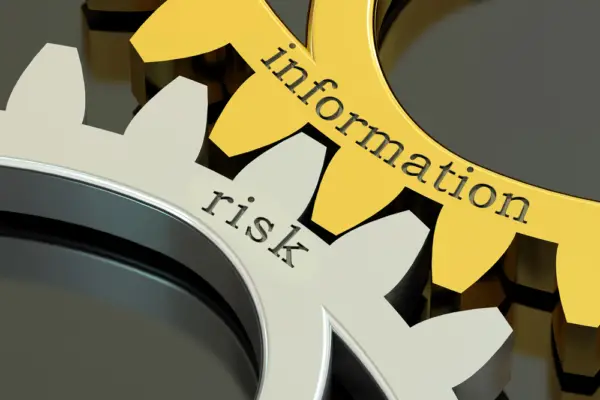Risk management in insurance is a practice that involves identifying, assessing, and taking steps to minimize or control risks that an individual or organization might face. It’s a critical aspect of the insurance industry, used to protect the insurance company and its policyholders.
Here’s a more detailed breakdown:
Identification of Risk: This is the first step in the risk management process. It involves identifying potential risks that could result in losses. These risks could be anything from natural disasters (like hurricanes or floods) to human risks (like accidents or illnesses) to financial risks (like market volatility or inflation).
Assessment of Risk: Once potential risks have been identified, they need to be assessed. This involves determining the likelihood of each risk occurring and the potential impact it could have. This is typically done using statistical analysis and historical data.
Risk Control: This involves implementing measures to reduce the likelihood of a risk occurring or to minimize its impact if it does occur. This could involve anything from implementing safety protocols to reduce the risk of accidents to diversifying investments to reduce financial risk.
Risk Financing: This involves determining how to cover the costs if a risk does occur. This is where insurance comes in. An individual or organization can transfer the risk to the insurance company by paying an insurance premium. If the risk does occur, the insurance company will cover the costs.
Monitoring and Review: The final step in the risk management process is to continuously monitor and review risks. This is because risks can change over time, so reassessing regularly is important.
Insurance companies face various types of risks, including operational, financial, strategic, and regulatory risks, which can have significant consequences if not managed adequately.
As a result, implementing effective risk management strategies is essential for insurance companies to maintain their financial stability, reputation, and competitive advantage.
In this article, we will explore the concept of risk management in insurance, including the different types of risks faced by insurance companies, the guidelines established by the National Association of Insurance Commissioners (NAIC), and the principles of enterprise risk management.
Additionally, we will discuss the rising importance of cybersecurity risk management in the insurance industry, given the increasing frequency and severity of cyber-attacks. Using the fundamentals of risk management in insurance, we can better understand the industry’s inner workings and the measures taken to protect policyholders and stakeholders.

Understanding Risks
In insurance investment management, understanding risks is crucial in identifying and managing possible underwriting, credit, market, operational, and liquidity risks. It is essential to have a holistic approach to risk management encompassing all aspects of the business, including cybersecurity risk analysis and compliance with regulatory requirements.
The National Association of Insurance Commissioners (NAIC) has established a model law governing cybersecurity risks in the insurance industry, emphasising the importance of identifying and managing risks to protect consumer data.
Insurance companies must be aware of new threat vectors and establish clear communication procedures to inform stakeholders. They must also ensure that outsourcing partners protect sensitive information and regularly test and monitor systems and procedures to detect and respond to cybersecurity events.
The NAIC sets out five steps to risk management for insurance companies, which involve:
- Designating a Risk Manager.
- Identifying reasonably foreseeable internal and external threats.
- Assessing the likelihood and estimating damage.
- Reviewing current policies, procedures, systems, and safeguards.
- Implementing procedures and safeguards.
Using these steps, insurance companies can develop a comprehensive risk management plan that addresses all aspects of the business and prepares them for events that may impede progress and growth.
Types of Risks
The classification of potential hazards into distinct categories based on their nature and characteristics is a fundamental aspect of evaluating the types of risks that may impact an organisation’s financial stability and viability.
In the insurance industry, there are several types of risks that insurers need to consider. These include pure risks, speculative risks, financial risks, non-financial risks, particular risks, fundamental risks, static risks, and dynamic risks.
Pure risks are losses that occur due to chance and are unexpected, while speculative risks involve the possibility of both gain and loss. Financial risks are related to monetary issues, such as fluctuations in interest rates or currency exchange rates. In contrast, non-financial risks are related to non-monetary issues, such as legal and regulatory compliance.
Particular risks are unique to a specific organization or industry, while fundamental risks are inherent to the entire sector. Static risks remain constant, while dynamic risks change and evolve.
Understanding the different types of risks is crucial for insurers to manage and mitigate potential losses effectively. Through identifying and evaluating the various risks, insurers can make informed decisions about which risks to accept, transfer, and mitigate. This helps insurers to minimize their exposure to potential losses and maintain their financial stability and viability over the long term.

NAIC Guidelines
The National Association of Insurance Commissioners (NAIC) provides guidelines for identifying and assessing potential threats, implementing procedures and safeguards, and updating controls to mitigate or accept risks. The NAIC recommends that insurance companies designate a risk manager and identify reasonably foreseeable internal and external threats. This includes assessing the likelihood and estimating damage caused by these threats.
It is also important for insurance companies to review current policies, procedures, systems, and safeguards and implement procedures and safeguards to manage identified risks. In addition to these guidelines, the NAIC sets out five steps to risk management for insurance companies.
These steps include identifying risks, assessing risks, developing a risk management plan, implementing the plan, and monitoring and updating the plan as needed.
The NAIC emphasizes the importance of enterprise risk management (ERM), which means monitoring and updating controls for mitigated or accepted risks. The ERM process should incorporate information security, as insurance firms face cybersecurity regulations at the state and national levels and extensive security expectations from banks that work with insurance firms.
Overall, the NAIC’s guidelines and steps for risk management are crucial for insurance companies. By identifying and assessing potential threats, implementing procedures and safeguards, and updating controls to mitigate or accept risks, insurance companies can better prepare for events that impede progress and growth.
Implementing risk management procedures also helps insurance companies protect consumer data and comply with cybersecurity regulations. Using the NAIC’s guidelines and steps, insurance companies can prioritize cybersecurity risk analysis and ensure that outsourcing partners also protect sensitive information.
Enterprise Risk Management
Implementing an enterprise-wide approach to identifying and mitigating potential risks is essential for organizations to maintain long-term success and protect against unforeseeable events. This is particularly important for insurance companies, which face various risks that can affect their operations and clients.
Enterprise risk management (ERM) is a process that allows companies to identify, assess, and manage risks across all areas of the business, including information security, financial stability, and compliance.
Insurance companies must establish a risk management framework with clear policies, procedures, and controls to implement effective ERM. This framework should be based on a thorough understanding of the company’s operations, risks, and objectives and should be regularly reviewed and updated as needed. Companies should also establish a risk management culture that encourages all employees to participate in identifying and managing risks.
One key aspect of ERM for insurance companies is incorporating information security into the risk management process. Cybersecurity threats are a significant concern for insurance companies, which collect and store large amounts of sensitive client information. ERM can help companies identify and mitigate these risks, ensuring that they maintain the trust of their clients and comply with regulatory requirements.
Using a comprehensive ERM program, insurance companies can help ensure their long-term success and protect against unforeseeable events.
Benefits of ERM for insurance companies
- Provides a comprehensive view of risks across all areas of the business.
- It helps companies identify and mitigate risks before they become significant issues.
- It helps companies comply with regulatory requirements and maintain the trust of clients.
Key components of an effective ERM program
- A risk management framework that includes clear policies, procedures, and controls.
- A risk management culture that encourages all employees to participate in identifying and managing risks.
- Incorporating information security into the risk management process to address cybersecurity threats.
Cybersecurity Regulations
Cybersecurity regulations play a critical role in safeguarding sensitive client information and ensuring the long-term success of insurance companies in today’s digital landscape. Insurance firms face cybersecurity regulations at both the state and national levels and extensive security expectations from the banks that work with insurance firms. The National Association of Insurance Commissioners (NAIC) offers a series of controls to guide actuaries in choosing appropriate security controls.
To comply with these regulations, insurance companies must prioritize cybersecurity risk analysis to protect consumer data. They must also be aware of new threat vectors and establish clear communication procedures to inform stakeholders. In addition, insurance companies must ensure that outsourcing partners protect sensitive information. Testing and monitoring systems and procedures regularly and creating audit trails to detect and respond to cybersecurity events are also essential measures to implement.
A table is presented below to provide a simpler overview of the cybersecurity regulations that insurance firms face. The table summarizes the key regulations insurance firms must comply with to protect their client’s sensitive information.
| Regulation | Description |
|---|---|
| NAIC Model Law | Governs cybersecurity risks in the insurance industry |
| State Regulations | Federal regulations, such as the Gramm-Leach-Bliley Act, also apply to insurance firms. |
| Federal Regulations | Federal regulations like the Gramm-Leach-Bliley Act also apply to insurance firms. |
| Bank Security Expectations | Banks that work with insurance firms have their own security expectations that insurance firms must comply with |
Insurance companies must comply with cybersecurity regulations to protect their client’s sensitive information and ensure long-term success in the digital landscape. The NAIC offers guidelines to help insurance companies choose appropriate security controls.
Additionally, insurance companies must be aware of new threat vectors and establish clear communication procedures, ensure outsourcing partners protect sensitive information, test and monitor systems and procedures regularly, and create audit trails to detect and respond to cybersecurity events.
Frequently Asked Questions
What are some common challenges insurance companies face in implementing effective risk management processes?
Insurance companies face challenges in implementing effective risk management processes, including cybersecurity risks, underwriting, credit, market, operational, and liquidity risks. Compliance with regulations and governance, data governance, and risk assessment are crucial in mitigating these risks.
How do insurance companies prioritize and allocate resources to different types of risks?
Insurance companies prioritize and allocate resources to different types of risks by performing risk assessments, identifying the most significant risks, categorizing and prioritizing them based on probability and potential impact, and implementing procedures and safeguards to mitigate or manage these risks.
Are there any emerging technologies or trends impacting how insurance companies approach risk management?
Emerging technologies and trends such as artificial intelligence, blockchain, and IoT impact how insurance companies approach risk management. These technologies are being utilized for risk assessment, fraud detection, and improving customer experience, among other applications.
How do insurance companies ensure all stakeholders, including customers and employees, are informed and educated about risk management processes and procedures?
Insurance companies ensure stakeholders are informed about risk management processes and procedures through clear communication procedures, regular testing and monitoring, and establishing audit trails. Outsourcing partners must also protect sensitive information, and data governance is crucial.
How do insurance companies measure the effectiveness of their risk management strategies over time?
Insurance companies measure the effectiveness of their risk management strategies over time by conducting regular risk assessments, monitoring key risk indicators, and evaluating the success of risk mitigation efforts. This process helps identify improvement areas and ensure ongoing compliance with regulatory requirements.

Conclusion
Risk management is an essential aspect of the insurance industry that helps companies identify and mitigate potential risks that may impede their progress and growth.
Understanding the different types of risks insurance companies face, such as operational, financial, and strategic risks, is crucial in implementing effective risk management strategies.
The NAIC guidelines and the concept of enterprise risk management provide a framework for insurance companies to assess and manage risks effectively.
Moreover, the increasing importance of cybersecurity risk management cannot be overstated, as cyber threats continue to evolve and pose significant risks to insurance companies and their clients.
Adhering to cybersecurity regulations and implementing robust security measures can help mitigate the risks posed by cyber threats.
Additionally, the principles of risk insurance, such as calculating premiums based on the probability and impact of events and the pooling of risks, play a crucial role in ensuring that insurance companies can provide coverage to their clients while maintaining financial stability.
Overall, effective risk management is critical in ensuring insurance companies’ long-term success and sustainability.

Chris Ekai is a Risk Management expert with over 10 years of experience in the field. He has a Master’s(MSc) degree in Risk Management from University of Portsmouth and is a CPA and Finance professional. He currently works as a Content Manager at Risk Publishing, writing about Enterprise Risk Management, Business Continuity Management and Project Management.

